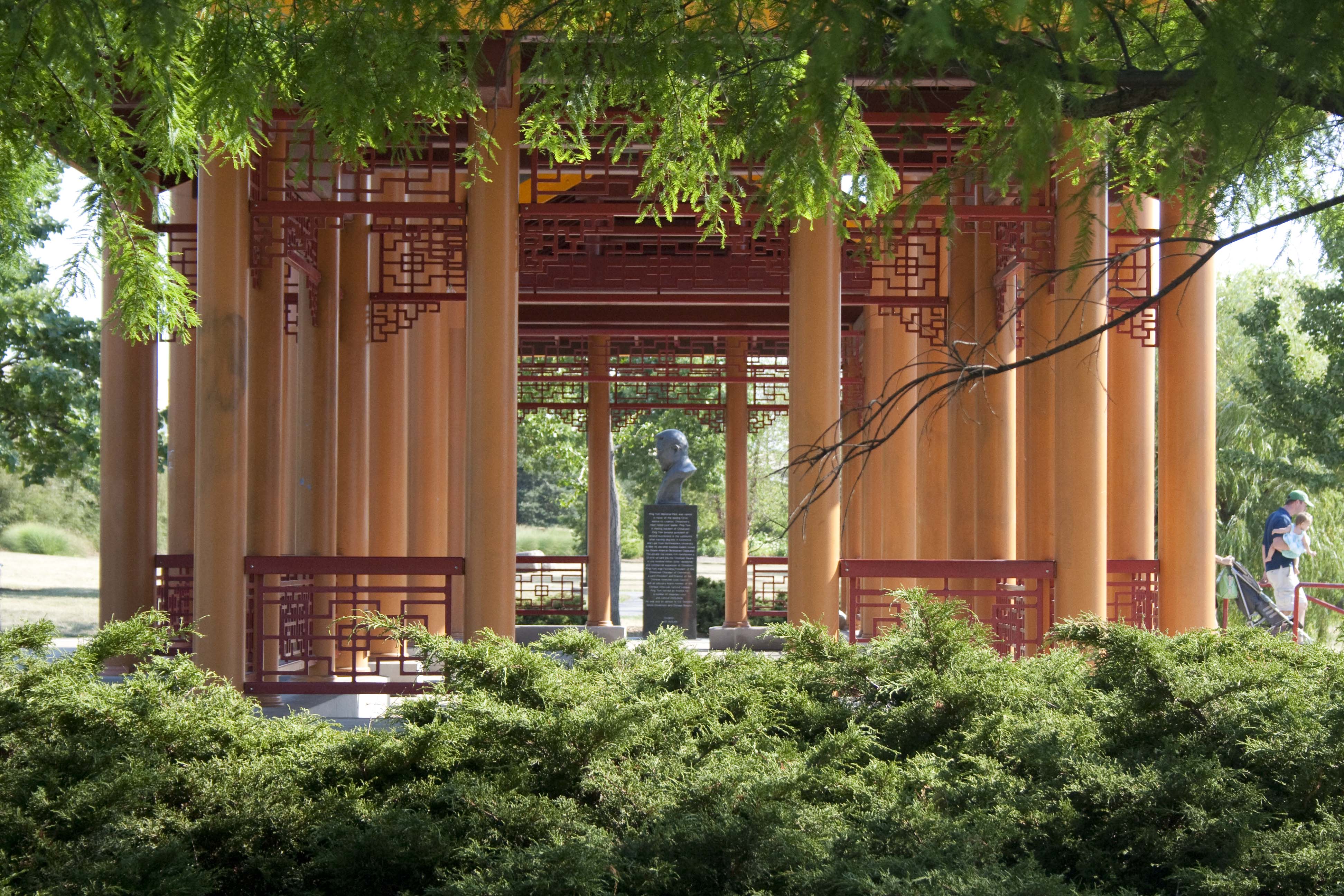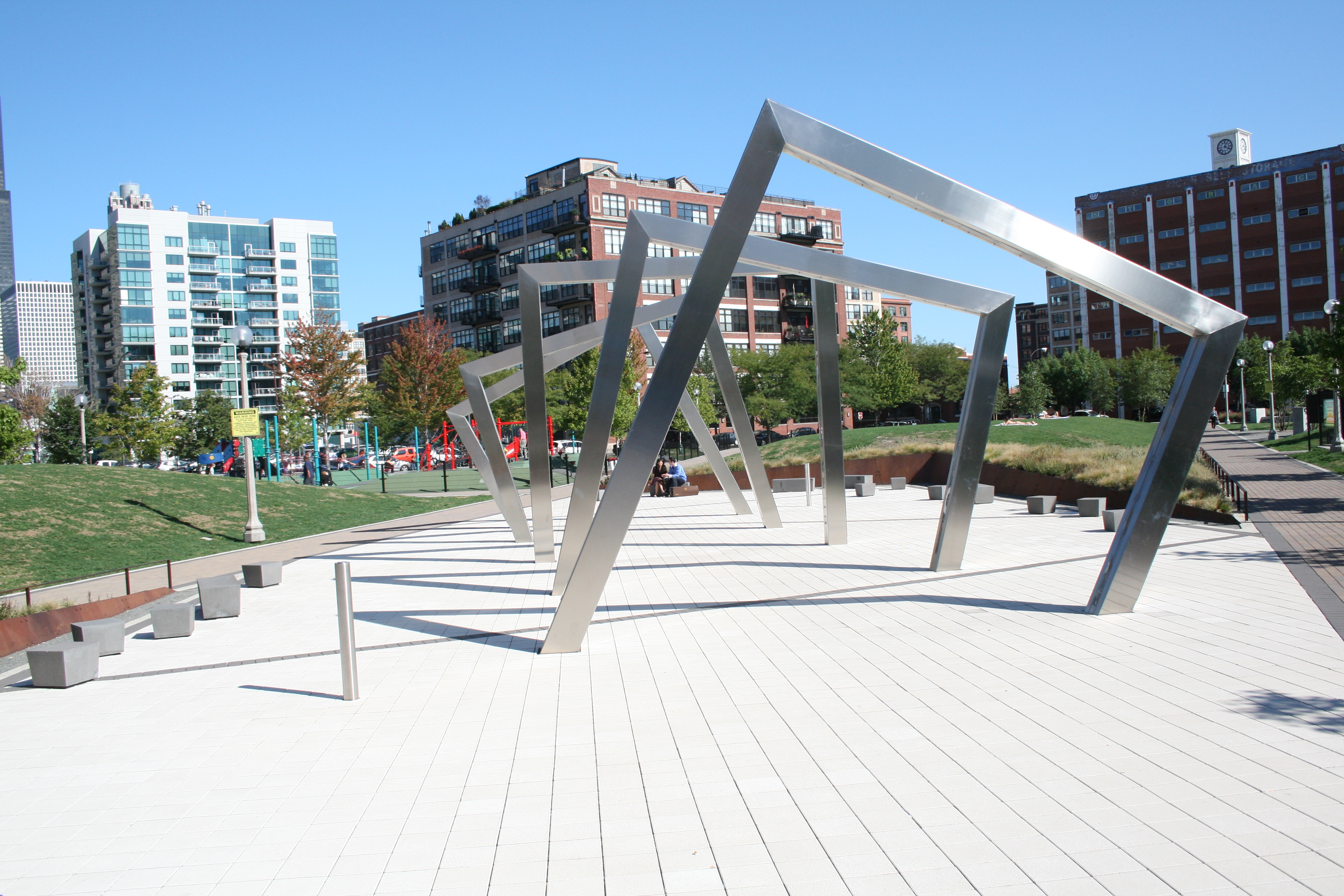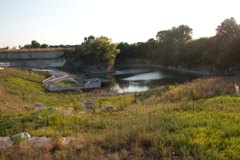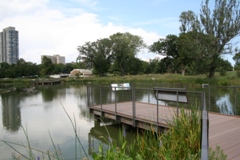-
Membership
Membership
Anyone with an interest in the history of the built environment is welcome to join the Society of Architectural Historians -
Conferences
Conferences
SAH Annual International Conferences bring members together for scholarly exchange and networking -
Publications
Publications
Through print and digital publications, SAH documents the history of the built environment and disseminates scholarship -
Programs
Programs
SAH promotes meaningful engagement with the history of the built environment through its programsMember Programs
-
Jobs & Opportunities
Jobs & Opportunities
SAH provides resources, fellowships, and grants to help further your career and professional life -
Support
Support
We invite you to support the educational mission of SAH by making a gift, becoming a member, or volunteering -
About
About
SAH promotes the study, interpretation, and conservation of the built environment worldwide for the benefit of all
Chicago’s Modern Park: a Trend of Purpose
This summer, SAH had two interns from the University of Chicago, Hannah Loftus and Kevin Robinson, who worked on SAHARA. Hannah and Kevin uploaded more than 900 images to SAHARA and worked on individual research projects documenting new Chicago parks and vernacular Chicago architecture, respectively. Read about Hannah's research below:
Chicago has a rich relationship between leisurely space and the city as a whole. Make no mistake, the city of big shoulders is a city of many people and many buildings; however approximately 8.2% of total land in Chicago is dedicated to parkland. There are over 570 parks throughout the city, which each offer a wide array of amenities and design features. Notable parks include Grant Park, Lincoln Park, and Jackson Park; however, there are an abundance of smaller parks that add to the strength of the Chicago Park District as well. I was tasked with photographing four contemporary parks in Chicago to add to the SAHARA Database; I chose Ping Tom Memorial Park, Mary Bartelme Park, Henry C. Palmisano Park, and the Nature Boardwalk at the Lincoln Park Zoo.
What I found most helpful in examining Chicago parks came from an unrelated event; throughout our time at SAH, Kevin and I were fortunate enough to attend a lecture at the nearby Newberry Library in a partnership between the internship programs of the two organizations. This particular lecture, entitled “The Book as Object,” considered the physicality of books, and significantly focused on books published by architects or about architecture. Somewhat fittingly, a first edition of Daniel Burnham’s Plan of Chicago was included in the lecture. Although I was already familiar with his plan, I now considered the influential design in terms of contemporary implementation of urban leisurely space. Daniel Burnham envisioned Chicago’s parklands to be places for the people, especially considering the shoreline of Lake Michigan. Burnham also called to preserve parks on the outer limits of Chicago as nature preserves. What became evident here, that I considered as I visited the following parks, was what their relationship and purpose was to the City of Chicago. Exactly what does a design, both architectural and landscape, convey about its meaning in an overall context? What meaning can be assigned based on extraneous factors? I examined five parks in the City of Chicago, the oldest completed in 1999, and the most recent in 2010. I went in with some background of each park, and aimed to determine how the overall design is indicative of a purpose, intended or not.
 Ping Tom Memorial Park (1999) most carefully considers its surrounding neighborhood and cultural environment in its design; it is a clear union of park and community. The creation of Ping Tom clearly set out to address a missing element in Chinatown: a park. Construction for the Dan Ryan Expressway had previously demolished the only two parks in the surrounding area. Following the development of the adjacent area into Chinatown Square along the river by the park’s namesake, real estate developer Ping Tom, the Chicago Park District began to transform the six acres below 18th Street into spacious parkland, at the helm of Ernest C. Wong of Site Design Group. “Spacious” was apparent upon first entering Ping Tom; its six grassy acres were divided by a series of walkways, occasionally interspersed with boulders, ginko trees, and bamboo which encouraged tranquility. What was even more apparent, however, was the infrastructure. In the northern section of the park was a Chinese style pagoda next to a children’s playground. These made me evaluate the purpose of distinct elements of Ping Tom; it was an urban oasis, but also a vital part of the community, both symbolically through the surface design and practically through the green space and gathering points it provides. Unlike parks I later visited, Ernest Wong designs for the visitor and cultural environment. However, perhaps a mistranslation of his intent, Wong’s design is unfortunately a separate entity from the central business district of Chinatown. What I found particularly confusing was the fact that, despite on a Thursday afternoon at about four o’clock, it was largely empty; only the playground was being used, as well as the pagoda as a stop for Chicago’s “water taxi.” Perhaps this is a result of the obscure entrance, an opening in a chain link fence nestled in a residential subdivision. I am not sure how to reconcile these truths: Ping Tom is a representation and community space of Chinatown, yet isolated. This is one case, perhaps, where intended and actual use do not converge.
Ping Tom Memorial Park (1999) most carefully considers its surrounding neighborhood and cultural environment in its design; it is a clear union of park and community. The creation of Ping Tom clearly set out to address a missing element in Chinatown: a park. Construction for the Dan Ryan Expressway had previously demolished the only two parks in the surrounding area. Following the development of the adjacent area into Chinatown Square along the river by the park’s namesake, real estate developer Ping Tom, the Chicago Park District began to transform the six acres below 18th Street into spacious parkland, at the helm of Ernest C. Wong of Site Design Group. “Spacious” was apparent upon first entering Ping Tom; its six grassy acres were divided by a series of walkways, occasionally interspersed with boulders, ginko trees, and bamboo which encouraged tranquility. What was even more apparent, however, was the infrastructure. In the northern section of the park was a Chinese style pagoda next to a children’s playground. These made me evaluate the purpose of distinct elements of Ping Tom; it was an urban oasis, but also a vital part of the community, both symbolically through the surface design and practically through the green space and gathering points it provides. Unlike parks I later visited, Ernest Wong designs for the visitor and cultural environment. However, perhaps a mistranslation of his intent, Wong’s design is unfortunately a separate entity from the central business district of Chinatown. What I found particularly confusing was the fact that, despite on a Thursday afternoon at about four o’clock, it was largely empty; only the playground was being used, as well as the pagoda as a stop for Chicago’s “water taxi.” Perhaps this is a result of the obscure entrance, an opening in a chain link fence nestled in a residential subdivision. I am not sure how to reconcile these truths: Ping Tom is a representation and community space of Chinatown, yet isolated. This is one case, perhaps, where intended and actual use do not converge.
 Wong’s later design, Mary Bartelme Park (2010), further builds off the relationship between park and community, but in a noticeably different way. It does not necessarily focus on a cultural environment that Chinatown so readily offered, but perhaps a lifestyle-environment. The West Loop of Chicago is becoming trendier and wealthier; more and more young professionals and families with children are moving to the area. Mary Bartleme Park is situated on a single city block, surrounded by rehabbed industrial buildings turned condos and new construction. Before development, the site was a vacant lot; given the recent rise of the West Loop in residential popularity it was necessary to create an urban oasis. It is largely angular, with straight, crisscrossing pathwards, angled planter-walls, and most notably, square metal sprinklers (modern art, perhaps, when not in use). More importantly, it featured a dog park, children’s playground, and a wide array of seating, in addition to clean, grassy fields: Bartelme is a perfectly manicured park, meant to serve the urban community with the amenities it features for the surrounding apartments. I felt it was certainly beautiful, but lacked any sort of aim rather than being a small oasis. This park was the busiest of all the parks I visited; unlike Ping Tom, the main focus was on how the space would actually be used, and form appropriately followed.
Wong’s later design, Mary Bartelme Park (2010), further builds off the relationship between park and community, but in a noticeably different way. It does not necessarily focus on a cultural environment that Chinatown so readily offered, but perhaps a lifestyle-environment. The West Loop of Chicago is becoming trendier and wealthier; more and more young professionals and families with children are moving to the area. Mary Bartleme Park is situated on a single city block, surrounded by rehabbed industrial buildings turned condos and new construction. Before development, the site was a vacant lot; given the recent rise of the West Loop in residential popularity it was necessary to create an urban oasis. It is largely angular, with straight, crisscrossing pathwards, angled planter-walls, and most notably, square metal sprinklers (modern art, perhaps, when not in use). More importantly, it featured a dog park, children’s playground, and a wide array of seating, in addition to clean, grassy fields: Bartelme is a perfectly manicured park, meant to serve the urban community with the amenities it features for the surrounding apartments. I felt it was certainly beautiful, but lacked any sort of aim rather than being a small oasis. This park was the busiest of all the parks I visited; unlike Ping Tom, the main focus was on how the space would actually be used, and form appropriately followed.
 It was with Henry C. Palmisano Park (2009, previously and still synonymously known as Stearns Quarry) that I began to see a clear relationship between the park and land, as well as park and education, further encouraged by Jeanne Gang’s Nature Boardwalk at the Lincoln Park Zoo. The land Palmisano sits on was previously used as a quarry from 1830-1969, and later a landfill for Chicago; the park’s design (again by Ernest C. Wong) feature both, in its large mound to the east of the park, and water filled quarry in the north, interspersed by metal and concrete walkways. Palmisano encourages sustainability, and recreates ecosystems native to the land: prairie plants, wetlands, a two-acre pond, as well as the birds and fish brought or attracted to the site. Rainwater and drainage is even directed to the pond instead of sewers. Drawing residents and non-residents of the Bridgeport community, Palmisano aimed to return to its ecological roots, and stress nature rather than a human imposition of what is important to the composition of a park. There was no playlot (although one was found in the adjacent McGuane Park) or any other significant infrastructure, the design of the park was dictated by the existing alterations to the land (the quarry and landfill), and native flora. Although perhaps unintentional, it commented on the permanent effect humans have on the natural environment, leading to its intentional effect: the role Chicagoans can play in encouraging sustainability.
It was with Henry C. Palmisano Park (2009, previously and still synonymously known as Stearns Quarry) that I began to see a clear relationship between the park and land, as well as park and education, further encouraged by Jeanne Gang’s Nature Boardwalk at the Lincoln Park Zoo. The land Palmisano sits on was previously used as a quarry from 1830-1969, and later a landfill for Chicago; the park’s design (again by Ernest C. Wong) feature both, in its large mound to the east of the park, and water filled quarry in the north, interspersed by metal and concrete walkways. Palmisano encourages sustainability, and recreates ecosystems native to the land: prairie plants, wetlands, a two-acre pond, as well as the birds and fish brought or attracted to the site. Rainwater and drainage is even directed to the pond instead of sewers. Drawing residents and non-residents of the Bridgeport community, Palmisano aimed to return to its ecological roots, and stress nature rather than a human imposition of what is important to the composition of a park. There was no playlot (although one was found in the adjacent McGuane Park) or any other significant infrastructure, the design of the park was dictated by the existing alterations to the land (the quarry and landfill), and native flora. Although perhaps unintentional, it commented on the permanent effect humans have on the natural environment, leading to its intentional effect: the role Chicagoans can play in encouraging sustainability.
 Jeanne Gang’s Nature Boardwalk (2010) falls in the same category as Palmisano; it aims to show off the natural environment and serve as a tool through which to educate its audience. It is less a community gem, as in the case with Palmisano. Situated directly south of Lincoln Park Zoo, it attracts a wide array of visitors, although largely on the youthful side. The Nature Boardwalk features pathways marked by metal railings surrounding the pond; the entire design is meant to exemplify the coexistence of urban and natural environments; it also meant to educate on the various plant and animal ecosystems found surrounding the pond. The most striking architectural feature is a honeycomb shaped, arched pavilion, which serves as a shelter for an outdoor classroom. The pathway, similar to Palmisano, is simple; however, the contrasting materials allows for a stark contrast between manmade creation and nature. Although I initially thought there could be a definite trend moving away from parks as community staples and parks acting as miniature nature preserves, this was not the case, as I saw with Mary Bartelme as community driven park and the most recently completed. The only trend was physical, in that modern materials and design components (walkways, structures) were futuristic and were clear impositions of man upon the environment.
Jeanne Gang’s Nature Boardwalk (2010) falls in the same category as Palmisano; it aims to show off the natural environment and serve as a tool through which to educate its audience. It is less a community gem, as in the case with Palmisano. Situated directly south of Lincoln Park Zoo, it attracts a wide array of visitors, although largely on the youthful side. The Nature Boardwalk features pathways marked by metal railings surrounding the pond; the entire design is meant to exemplify the coexistence of urban and natural environments; it also meant to educate on the various plant and animal ecosystems found surrounding the pond. The most striking architectural feature is a honeycomb shaped, arched pavilion, which serves as a shelter for an outdoor classroom. The pathway, similar to Palmisano, is simple; however, the contrasting materials allows for a stark contrast between manmade creation and nature. Although I initially thought there could be a definite trend moving away from parks as community staples and parks acting as miniature nature preserves, this was not the case, as I saw with Mary Bartelme as community driven park and the most recently completed. The only trend was physical, in that modern materials and design components (walkways, structures) were futuristic and were clear impositions of man upon the environment.
In comparing these four parks, I realized that while all were attractive in their own right, they were all for different reasons: Ping Tom as an extension of Chinatown, Mary Bartelme as a collection of amenities, Palmisano as a reminder of the importance of sustainability, and the Nature Boardwalk as a place of education. All were tranquil, relaxing, fun, an escape, whatever the park-goer wanted; this was inherent in being an urban park. Each fulfilled Burnham’s vision of being “places for the people.” However, a closer look at the design suggests specific reasons for the park. A park is the final product; it is shaped by a variety of factors that influence its design and intended use. For example, the audience of each dictates the form; each park had a similar audience (urban dweller), but was shaped differently to accommodate different aspects of the audience (urban dwellers in search of an urban oasis, or eager to learn about natural ecosystems). Other factors include the location of the park (Ping Tom, situated in an awkward proximity to Chinatown business distract, or Palmisano, on the site of an old quarry and landfill), space availability (Bartelme’s many amenities but single city-block), and surrounding culture (Ping Tom in Chinatown, Bartelme in the West Loop). It will be fascinating to return to the parks when they are no longer “modern” and see how they have served the City of Chicago.
About Hannah:
Hannah Loftus is a 2012 Jeff Metcalf Fellow at the Society of Architectural Historians, and fourth year undergraduate at the University of Chicago. She is pursuing a degree in Anthropology, but has academic interests in architecture, archaeology, and geography as well, and has previously worked at both the Oriental Institute and Frank Lloyd Wright’s Robie House. In her spare time, Hannah pursues her love of rock music and getting lost in the city of Chicago.
Parks Documented:
- Ping Tom Memorial Park- Ernest C. Wong, Site Design Group (1999), 300 W. 19th St., Chicago, IL
- Mary Bartelme Park - Ernest C. Wong, Site Design Group (2010), 115 S. Sangamon, Chicago, IL
- Henry C. Palmisano (Stearns Quarry) Park - Ernest C. Wong, Site Design Group (2009), 2700 S. Halsted St., Chicago IL
- Nature Boardwalk (LPZ) - Jeanne Gang, Studio Gang (2010), South Pond, Lincoln Park Zoo, Chicago, IL
Resources:
History of Ping Tom Memorial Park. Ping Tom Park Advisory Board. http://www.pingtompark.org/History.html.
Kamin, Blair. "West Side Story: A New Park, with Dynamic Geometry and Bold Interactivity, Creates an Urban Oasis amid Wall-to-wall Condos." Chicago Tribune. N.p., 27 Aug. 2010. Web. 30 Aug. 2012. <http://featuresblogs.chicagotribune.com/theskyline/2010/08/west-side-story-a-new-park-with-dynamic-geometry-and-bold-interactivity-creates-an-urban-oasis-amid-.html>.
"Mary Bartelme Park." Landscape Urbanism. http://landscapeurbanism.com/strategy/mary-bartelme-park-2.
"Nature Boardwalk." Lincoln Park Zoo. http://www.lpzoo.org/nature-boardwalk.
"Nature Boardwalk at Lincoln Park Zoo." Studio Gang Architects. http://www.studiogang.net/work/2005/lincolnparkzoo.
"Palmisano Park." Landscape Urbanism. http://landscapeurbanism.com/strategy/palmisano/. Parks & Facilities.
Chicago Park District, 2012. http://www.chicagoparkdistrict.com/.
Smith, Carl. "The Plan of Chicago." Encyclopedia of Chicago. Chicago: Newberry Library, 2004. Web. 30 Aug. 2012. <http://www.encyclopedia.chicagohistory.org/ pages/10537.html>.



Leave a commentOrder by
Newest on top Oldest on top